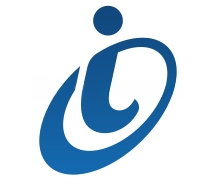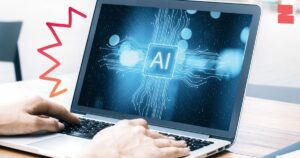
How to Convert Visitor Visa to Work Permit in Canada: A Clear Guide
Many people arrive in Canada on a visitor visa, hoping to see the country and spend time with family or friends. But sometimes, plans change. Maybe you find work opportunities that make you want to stay longer. So, is it possible to convert a visitor visa to a work permit in Canada?
The short answer is yes — but it’s not as simple as flipping a switch. This guide will walk you through what you need to know, what steps to take, and what new rules mean for visitors hoping to work in Canada.
Why Rules for Visitor Visas Changed
In 2020, when the pandemic made travel hard, Canada brought in a special rule. It allowed people inside the country on a visitor visa to apply for a work permit without leaving. But this temporary rule ended on August 28, 2024.
Now, you need to follow the usual immigration process. For most people, that means you may need to leave Canada and come back once your work permit is approved.
Steps to Convert Visitor Visa to Work Permit
Changing your visitor status to worker status takes planning, paperwork, and patience. Here’s how you can do it right.
1. Arrive in Canada on a Valid Visitor Visa
First, you must hold a valid visitor visa (also called a Temporary Resident Visa, or TRV). This visa lets you enter Canada for a short time — usually up to six months.
What You’ll Need for a Visitor Visa:
-
Show you have enough money for your stay.
-
Prove you plan to go back home (a job, property, or family helps show this).
-
Be in good health and have no criminal record.
-
Complete all the required forms and pay the fees.
Basic Costs:
-
Visitor visa fee: about $100 CAD
-
Biometrics: about $85 CAD
-
Extension, if needed: $100 CAD
-
Restoring your visitor status (if it expires): $200 CAD
2. Get a Job Offer That Meets Requirements
To convert a visitor visa to a work permit, you first need a real job offer from a Canadian employer. For most jobs, your future boss must get a Labour Market Impact Assessment (LMIA) — this shows no Canadian worker is available to do the job.
Getting an LMIA is not always easy:
-
The employer must post the job and try to hire locally first.
-
They must show proof they couldn’t find a Canadian worker.
-
They pay fees and do extra paperwork.
Because of this, some employers hesitate. But high-demand jobs or specialized roles stand a better chance.
Where to Look for Jobs:
-
Check websites like Job Bank, Indeed, and LinkedIn.
-
Ask friends or family in Canada if they know employers hiring foreign workers.
-
Contact employers directly if you have skills that match their open roles.
3. Apply for a Work Permit
Once you have a job offer and a positive LMIA, you can apply to convert your visitor visa to a work permit.
How It Works:
-
Fill out the work permit application online.
-
Attach all supporting documents.
-
Pay the fee (usually about $155 CAD).
-
Wait for approval — it can take 3–8 weeks, depending on your situation.
What is Flagpoling?
Because you can’t always change status from visitor to worker inside Canada anymore, many people now use “flagpoling.”
Flagpoling means you briefly cross into the U.S. (or another border), then return to Canada to activate your new work permit at the border.
Steps for Flagpoling:
-
Bring all paperwork.
-
Cross the border, turn around, and return to a Canadian port of entry.
-
Show your job offer, LMIA, and approval letter.
-
Answer all questions honestly.
Other Ways to Get a Work Permit Without an LMIA
Some people can convert a visitor visa to a work permit without an LMIA if they meet special rules. Here are a few examples:
✔️ Spousal Open Work Permit: If your spouse studies or works in Canada legally, you may qualify for an open work permit.
✔️ Express Entry: This is Canada’s main system for skilled workers to apply for permanent residency. If you get a job offer through Express Entry, you may also get a work permit.
✔️ Provincial Nominee Programs (PNPs): Provinces choose skilled workers to fill local jobs. If you get nominated, you can apply for a work permit.
✔️ Global Talent Stream: For tech and engineering workers — offers quicker LMIA processing.
✔️ International Mobility Program: For certain jobs, you don’t need an LMIA. This covers intra-company transfers, youth exchange programs, and others.
Programs That Can Help
If you want more options, check out these programs:
-
Post-Graduation Work Permit: Study first, then work.
-
Francophone Mobility Program: For French-speaking workers outside Quebec.
-
Atlantic Immigration Program: For jobs in the Atlantic provinces.
-
Rural and Northern Immigration Pilot: For jobs in smaller towns.
-
CUSMA: For U.S. or Mexican citizens in approved professions.
-
Start-Up Visa: For entrepreneurs with big ideas.
-
Agri-Food Pilot: For jobs in farming and food processing.
-
Student Direct Stream: Study faster, then work later.
Why Hire an Immigration Consultant?
The steps to convert a visitor visa to a work permit can feel overwhelming. A licensed immigration consultant can check your options, help you avoid mistakes, and give you advice that fits your situation.
Common Questions
Can I really convert a visitor visa to a work permit?
Yes, but you must meet all the requirements and usually leave Canada to activate it.
How long does it take?
Simple cases might take 3–4 weeks. Complex ones can take longer.
What happens if I overstay my visitor visa?
Overstaying can lead to serious trouble — loss of status, fines, and trouble returning in the future.
Do I have to leave Canada?
In many cases, yes — unless you qualify for an exemption like a spousal work permit.
Final Words
Canada offers many paths to turn a short visit into a longer stay with the right plan. If you want to convert your visitor visa to a work permit, be honest, follow all steps, and get trusted advice if you’re not sure.






